SURVIVING ZODIAC HEAD STATUES from a glorious imperial garden destroyed by British and French soldiers in the Opium War in 1860 are on show at City University of Hong Kong.
The Old Summer Palace, known as Yuanmingyuan (圓明園), was a huge area, covering more than 3.5 square kilometres of land in Beijing. Historians say it took 4,000 soldiers three days to destroy it.
The zodiac head sculptures (生肖獸首) once formed part of a Western-style water-clock fountain in the Hall of Calm Seas, also known as Haiyantang (海晏堂), in the Qing Dynasty’s imperial garden.

The exhibition opened at the university in Kowloon Tong on July 4 and will run to 31 October 2023.
Known as the “Garden of Gardens”, Yuanmingyuan was first constructed in the reign of Emperor Kangxi (康熙帝) in 1707. Emperors Kangxi, Yongzheng (雍正帝) and Qianlong (乾隆帝) assimilated Western art, architecture and culture and technology.

While Qianlong was eager to build Western-style buildings in the resort garden, he turned to European Jesuit missionaries whose expertise on arts, engineering and architecture were highly cherished. The emperor called on their talent to help design and construct Western buildings, pavilions and a maze inside the garden.
Throughout early Qing period, Yuanmingyuan was the epitome of Chinese and Western architectural splendor. In the water-clock fountain’s design, 12 bronze statues of seated zodiac animals spouted water alternately around the clock to tell the time.
However, the zodiac head sculptures and other invaluable relics in Yuanmingyuan were plundered after British and French forces burned down the imperial resort garden in the Second Opium War.
China’s dedicated efforts to protect the ruins of the garden have helped recover the past splendid of Yuanmingyuan over the past decades. The whereabouts of zodiac head statues and historians and archeologists’ devotion to retrieve them have created mystery around the artifacts.
FOUR ZODIAC HEAD SCULPTURES

The four zodiac sculptures – tiger, pig, ox and monkey – are being displayed in the exhibition “The Grand Gathering of the Century: Zodiac Heads from the Yuanmingyuan and Important Treasures”.
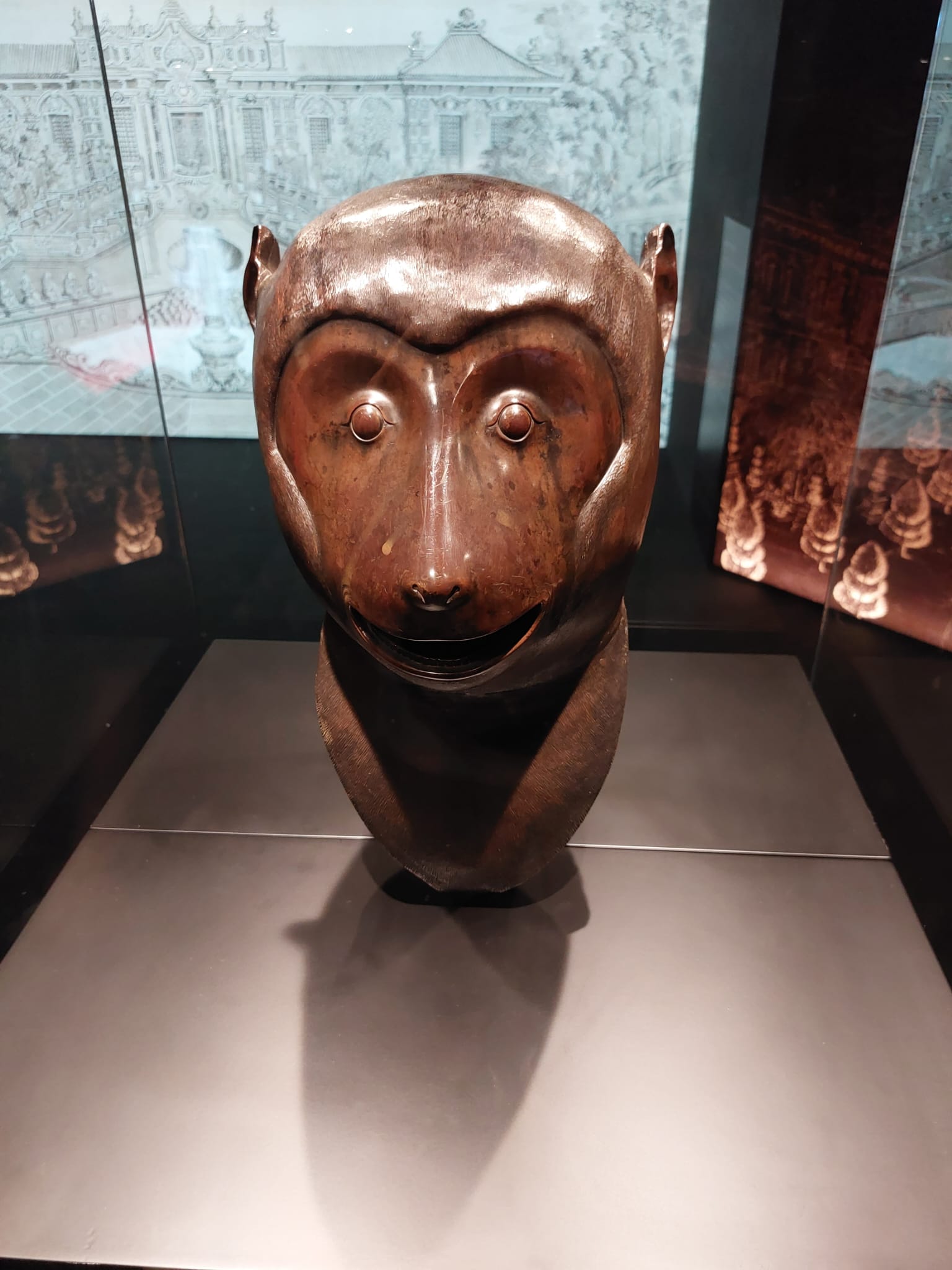
The exhibition is co-organised by China Tourism Group, China Poly Group and City University of Hong Kong.
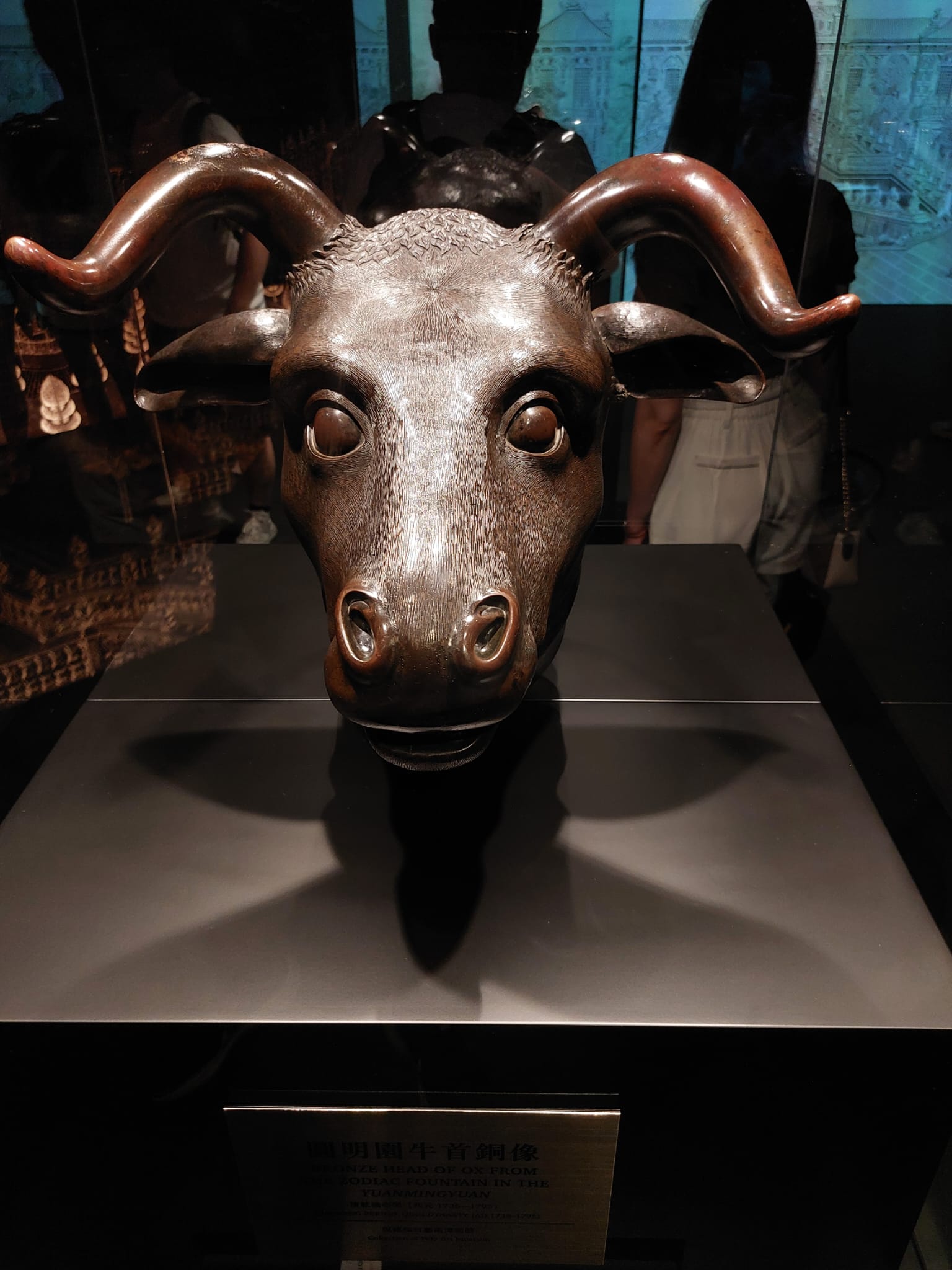
The exhibition will also feature 12 replica zodiac head statues from Singapore’s Asian Civilisations Museum (新加坡亞洲文明博物館) from early September to late October.
In 2000, the statues of tiger, ox and monkey heads were purchased by state-owned China Poly Group in Christie and Sotheby’s auctions for over HK$30 million, whereas late business magnate Stanley Ho Hung-sun made a donation of RMB 6 million to a protection group in China – which traced the pig head from an American collector. Ho also purchased the horse head for US$8.84 million later. Ho donated the pig and horse heads to the country.
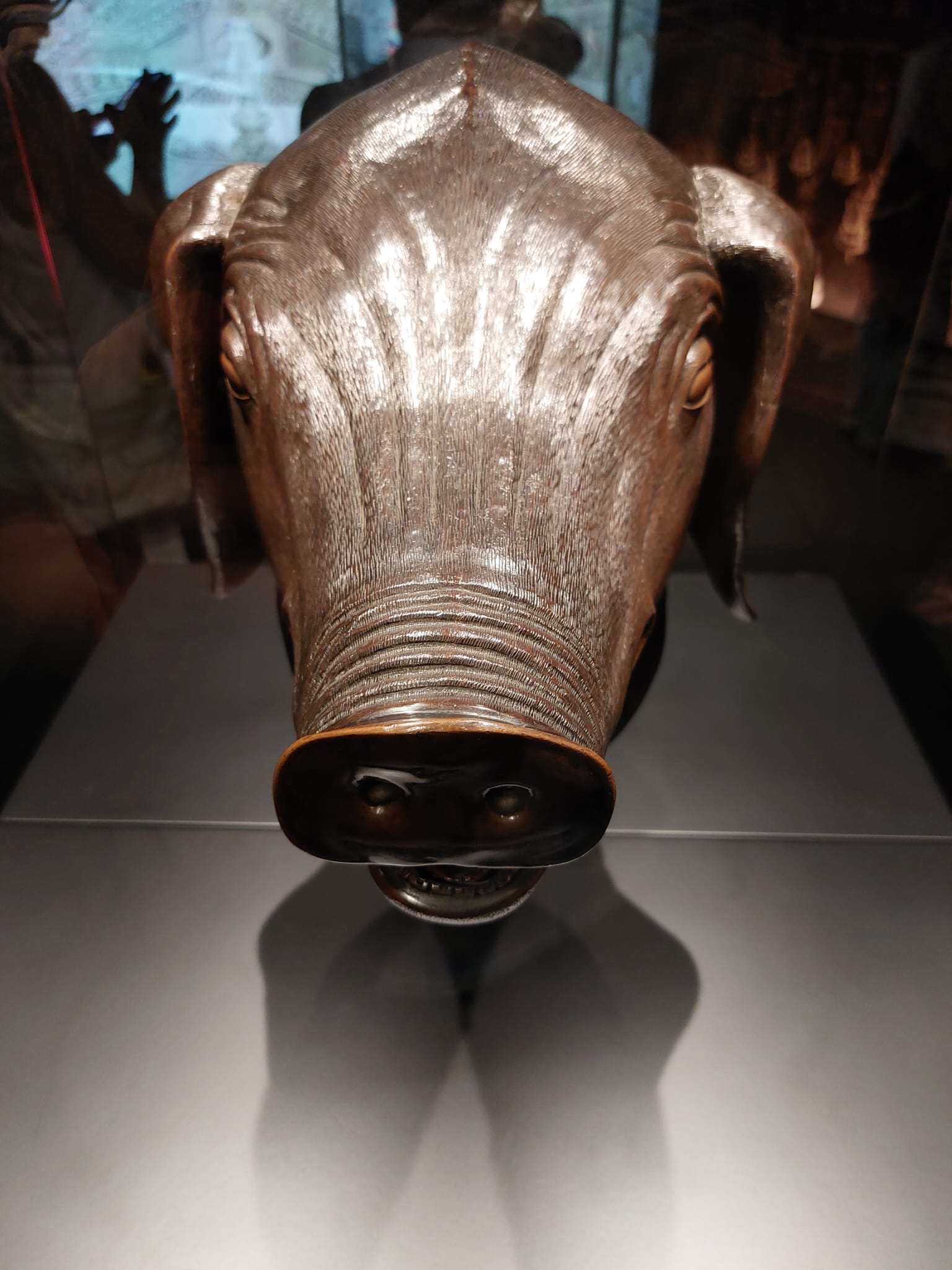
In 2013, the Pinault family from France said they had bought bronze rabbit and rat heads from original owner and donated them to China.
However, the statues of the dog, rooster, dragon, sheep and snake heads are untraceable.
IMMERSIVE EXPERIENCE
Meanwhile, visitors used to rely on their imagination to get an impression of the splendid of the resort garden. They may now be able to get a clearer understanding of its former glory.
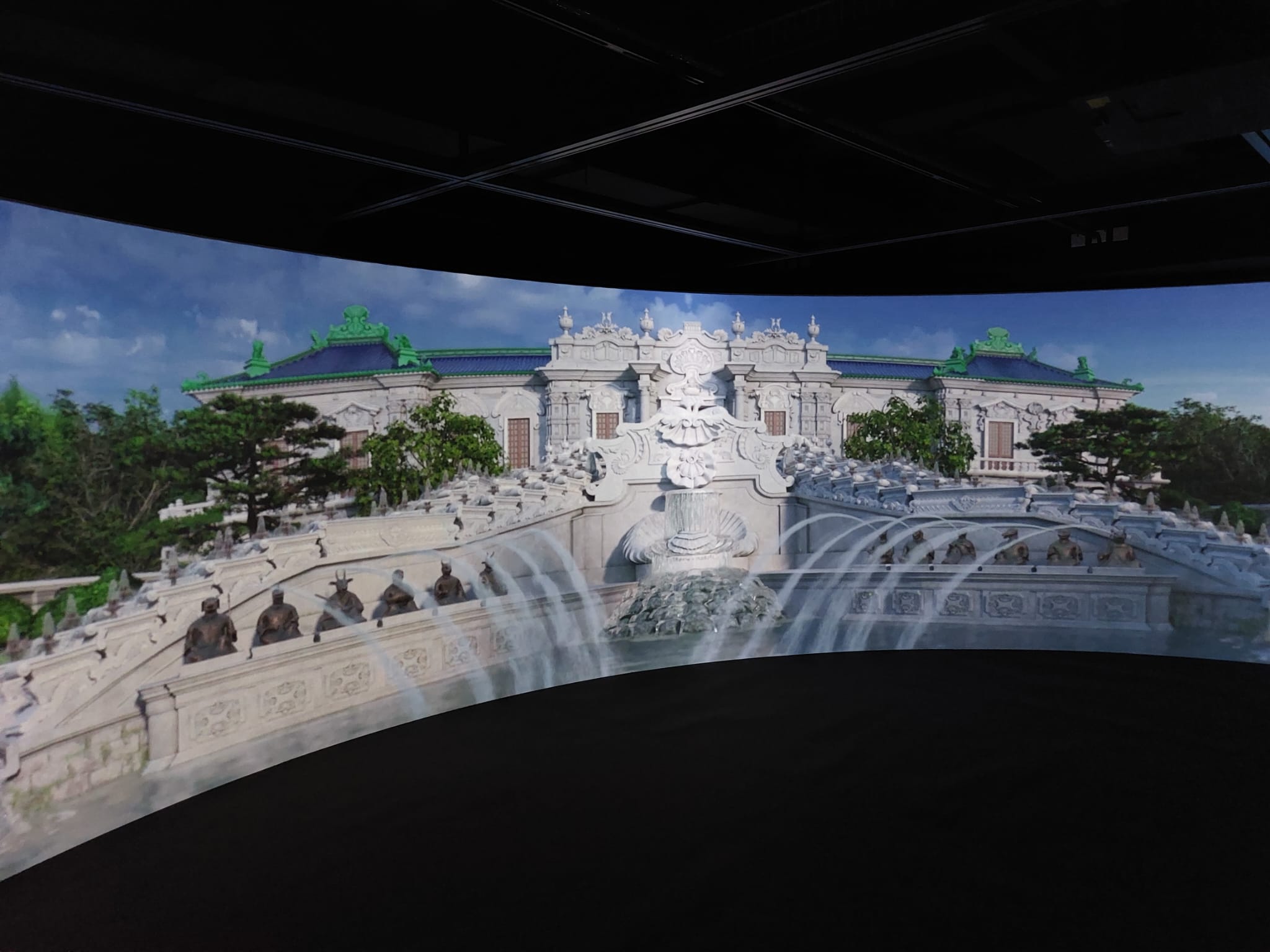
In the exhibition, visitors can admire virtual animation showing the architectural features of the water-clock fountain in the Hall of Calm Seas on a giant screen.

The exhibition has leveraged innovative technologies to let visitors understand the design of all the zodiac head statues in details.
THREE MILLENNIA OLD
Above all, other national bronze relics – which can be traced back to Zhou Dynasty (BC1046 – 256) more than 3,000 years ago – are being showcased in the exhibition.

An ancient bronze vessel, known as Sui Gong Xu (遂公盨), is displayed in the exhibition.

An inscription was cast into the inside bottom of the container – telling the renowned tale of ancient legendary king Yu the Great (大禹) who was famed for taming the Yellow River and exercising benevolent rule in ancient China.
The tale is that Yu had spent 13 years to successfully resolve flooding problems in the Yellow River. In the process, he and his team ensured that water could be used for irrigation in farming and that helped settlements on China’s fertile river banks to flourish.
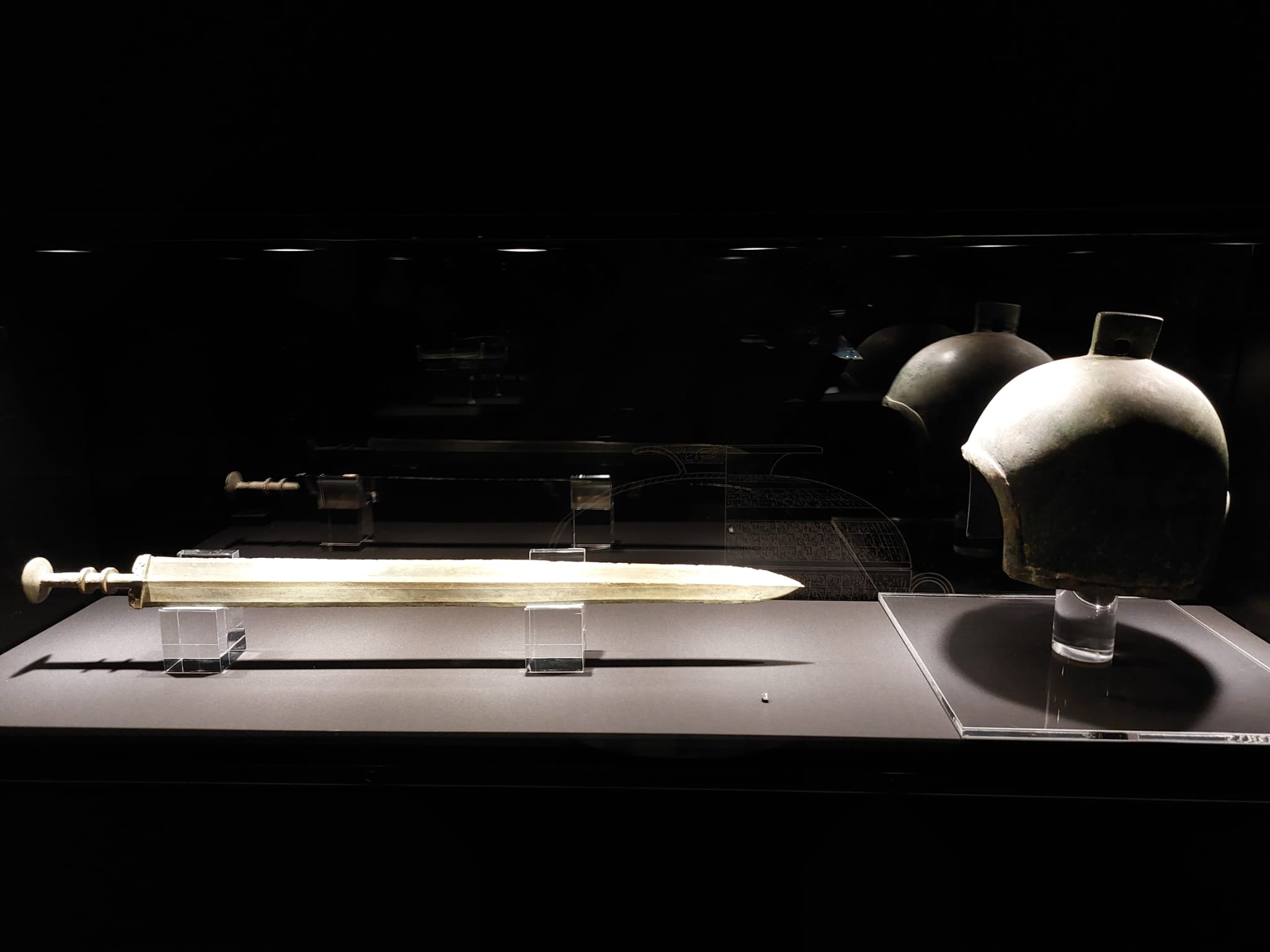
Other exhibits include a bimetallic sword which can be dated back to the Warring States period (BC475 – 221) and other relics in different dynasties.
Once lost overseas, the zodiac head sculptures from Yuanmingyuan are among the best-known relics in China. With once-renowned trove of Chinese and European-style architectural wonder and aesthetics of its age, there are advocates for rebuilding the garden to restore its glory and it is hoped all lost cultural relics would be collected in one day.
Image at the top from the Indra and Harry Banga Gallery of City University of Hong Kong.
